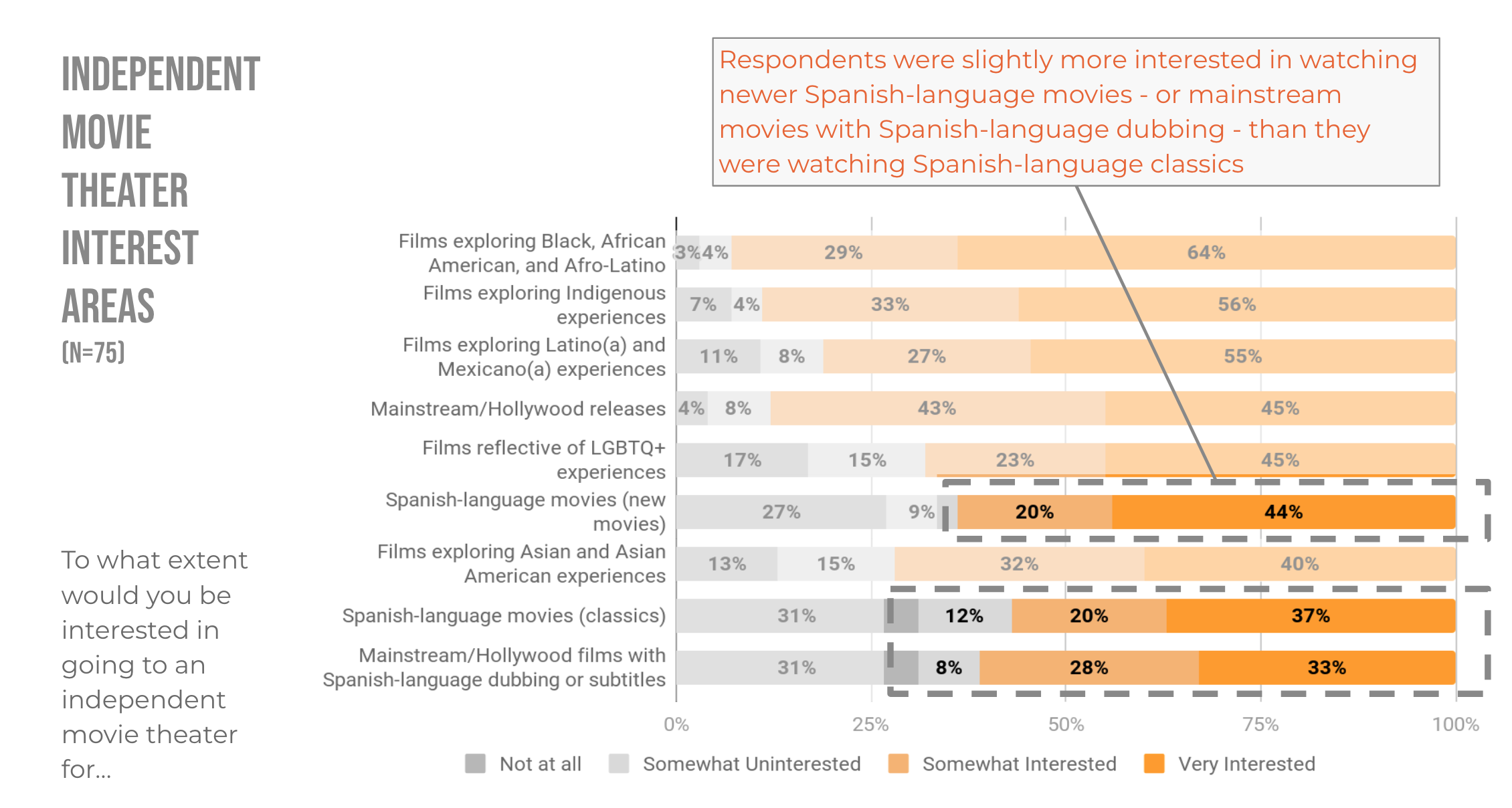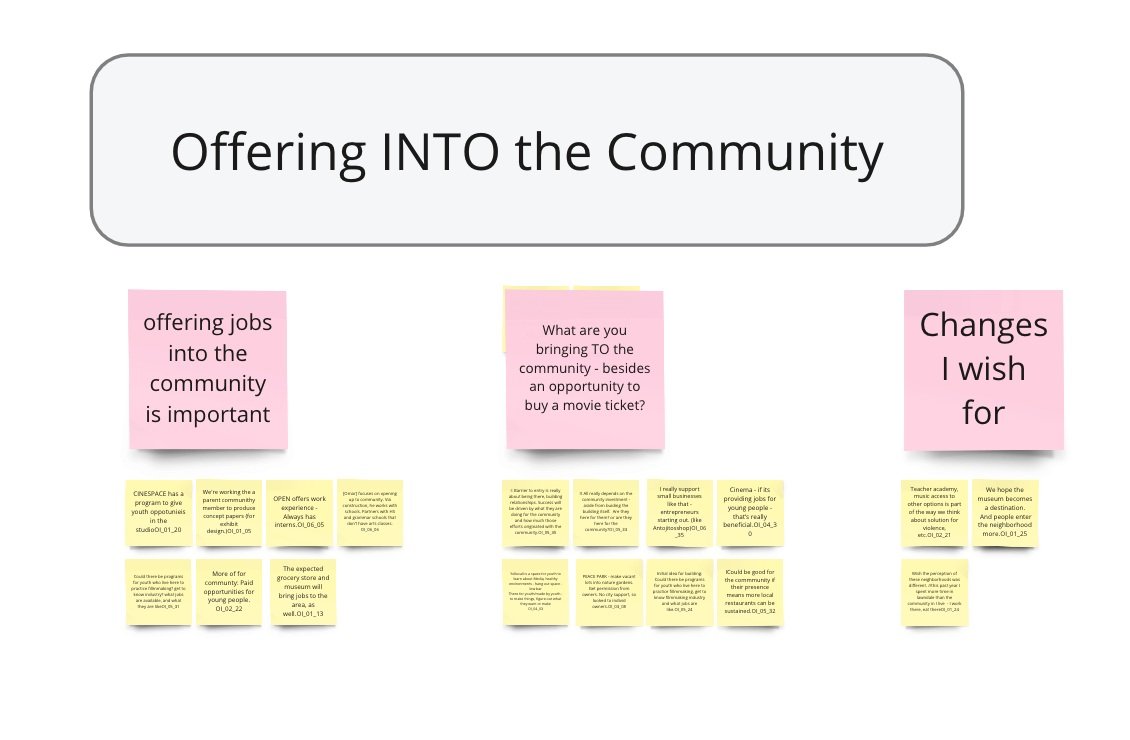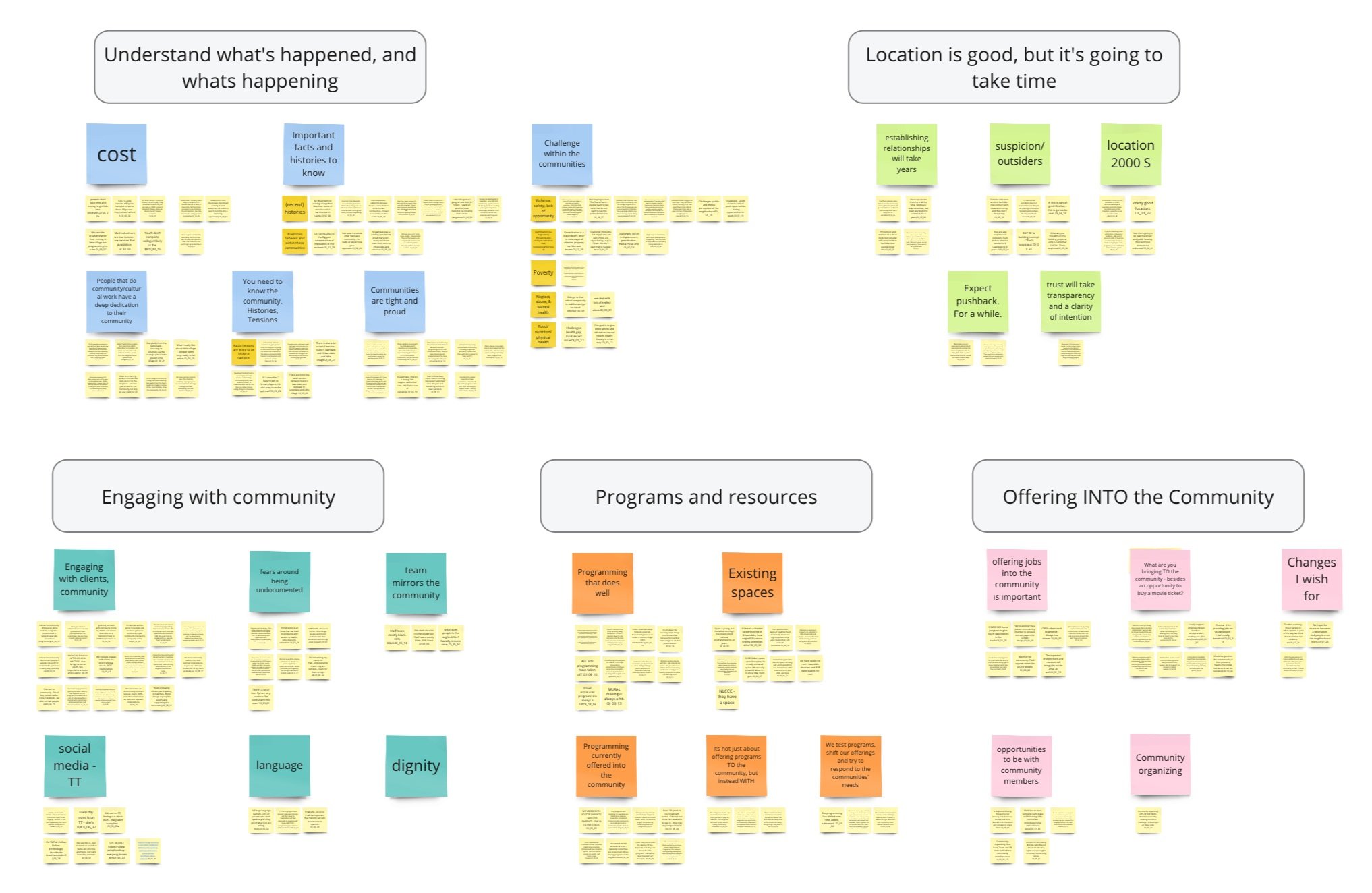
Overview
Our client was Full Spectrum Features, a nonprofit organization committed to diversity and equity in the independent film industry. The organization hired our team at DigIn UX to determine the feasibility of a new site promoting diversity, arts and film in Westside Chicago (Located near North and South Lawndale). More than 80% of the residents in these communities identify as Latinx or Black. And these communities have long experienced under-investment in arts and culture.
Our goal was to test the building concept with Westside Chicago community members including Spanish-speaking residents, to understand what it would take to make the project sustainable and successful.
Our Team
This project was led by DigIn UX, a research consulting firm. Our team included:
1 Principal Strategist
1 Bilingual UX Researcher (me)
1 Quantitative Evaluator
My role included designing and conducting research with English and Spanish-speaking participants.
Fig. 1: The DigIn UX project team
Project Phases
1) Stakeholder Input
To kick off the project, our team interviewed Full Spectrum Features stakeholders to develop an understanding of the project goals and timeline.
2) Organizational Interviews
Seven organizational Interviews were conducted with leaders from arts, cultural and social organizations.
Results: 7 interviews (~60-min. each)
3) Community Interviews
In addition, we also conducted nine community interviews with local residents. These interviews were conducted in both English and Spanish.
My role in this phase:
Design a 13-question community interview guide—The interview focused on open-ended questions related o the community, challenges, and brainstorming opportunities for a local micro cinema and community space
Translate the interview (English and Spanish)
Conduct interviews
Results: 9 interviews (~45-min. each), 5 in Spanish
4) Quantitative Study
We sought to develop a broader understanding of the community's art engagement, needs and interviews. To do this, we built a 10-question survey and shared it across the relevant communities.
Online and paper survey distribution: One challenge we encountered was recruiting participants from the relevant Chicago communities. To increase the number of target respondents and get a broader sample of participants, we distributed the survey through social media, email lists, and we also partnered with a local resident to gather responses during local festivals.
My role in this phase:
Review and edit the survey questionnaire
Translate the final survey to Spanish
Develop recruiting materials for social media, email, and physical distribution
Results: 102 survey responses
5) Synthesis & Final Data Delivery
In the final phase of the project, I worked with the project strategist to synthesize data and develop a presentation.
We used affinity diagramming to organize the interview data and consolidate our findings.
To conclude the project, we presented the findings to the Full Spectrum Features team- and in turn they were able to incorporate the research findings into a $2.3 million proposal submission.
My role in this phase:
Review data and translate insights from Spanish-speaking participants
Help finalize the key findings from the qualitative interviews using affinity diagramming on Miro
Review the presentation slides deck
Participate in the final presentation to the client
Results: Final presentation, 125-slide deck that included findings from the research studies
Fig. 2: This project was organized in 5 phases
Fig. 3: We used Miro for notes/brainstorming
Fig. 4: The survey included 10 questions
Fig. 5: Sample survey results
Fig. 6: We used Miro to synthesize findings
Fig. 7: Overview of interview data organization
Reflection
This project allowed me to work collaboratively with the Full Spectrum Features and DigIn UX teams during a mixed-methods project. Given that the team was often in two or more different time zones and multiple locations, weekly check-in meetings were important to clearly communicate updates, challenges and progress over the two-month project.
One important aspect of the project that stood out to me was the focus on participation with Spanish-speaking community members. We developed recruiting materials, research instruments and other materials in two languages. This allowed non-English speaking participants to be included and allowed us to gain deep insights about an important segment of Westside Chicago communities. Our efforts to recruit diverse participants also allowed us to include participants whose families have been in the community for multiple generations, which also added value to our findings.








